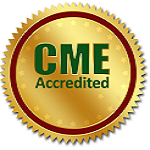
Jorg C. Gerlach
University of Pittsburgh| USA
Title: A critical review of the clinical experience on autologous cell-spray grafting for deep-partial thickness burns
Biography
Biography: Jorg C. Gerlach
Abstract
Innovative skin stem cell-based therapies in burn and trauma surgery are described, that of interest to reduce the significant complication rate of acute non re-epithelializing skin wounds.
An interdisciplinary team of cell biologists, experimental surgeons and bioengineers at the University of Pittsburgh; clinical experts in burns and trauma patients (University of Pittsburgh Medical Center, UPMC Mercy Hospital Burn and Trauma Units); the original developer of the technology (StemCell Systems, Berlin, Germany) and an industry partner that enables commercialization and marketing (RenovaCare, NY); is working on implementing skin cell-spray grafting, using the patient´s own skin stem cells, in an autologous on-site setting of isolation and grafting in one operation room.
We could introduce cell isolation techniques and spray grafting of single non-cultured stem cells from the epidermis and the dermis. This contribution explains the experience of treating over 44 patients with deep partial-thickness burns in Pittsburgh and provides an analysis of problems, pitfalls and remedies, with overall very satisfying clinical results.
Our cell isolation and clinical application success rate improved over time, reducing to a 10% failure rate after treating the first 10 patients, to a 0% clinical failure rate in the patients group of patients 21-30 and 31-40 and 41-47. No patient died of burn treatment. The rate of overall fully satisfying procedures increased by time as well. All initial factors that contributed to technical issues could be identified and addressed. Our rate of technical issues during the procedure decreased significantly over time by 75% to a current 20% technical issue rate. A current rate of 20% technical issues in patients 41-47 occurred only after changing a technical practice, and we could fully address the issue by identifying an education gap when training new technical assistants. This also indicates that staff training, timely quality control and thorough quality management is important, while changes in the procedure need to be carefully monitored.
The overview concludes with therapy suggestions for expediting and enhancing the wound healing process in acute burn and trauma patients, reducing scar formation and complications in deep partial-thickness burns.
A further development of such technologies may result in a paradigm shift in acute burn wound treatment, towards autologous stem cell- based grafting therapy for patient-tailored treatments.

